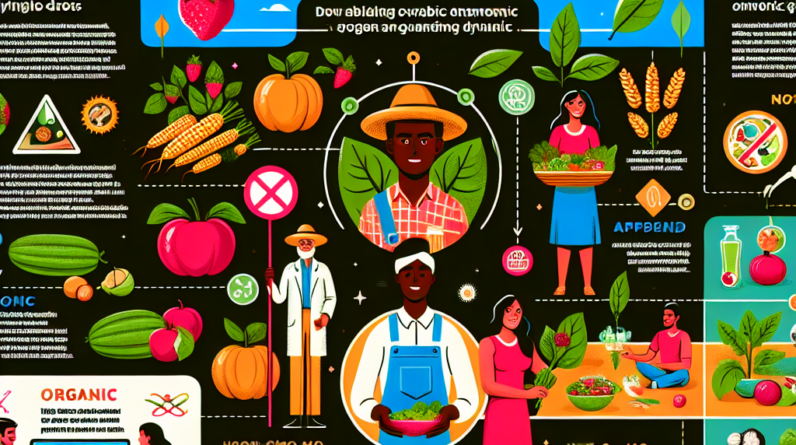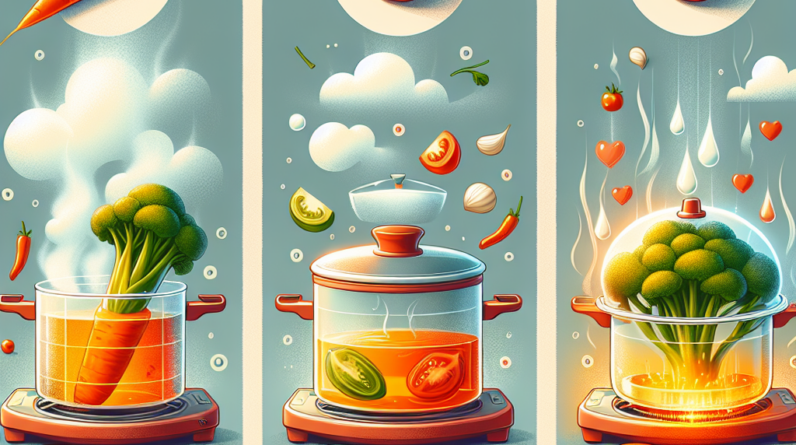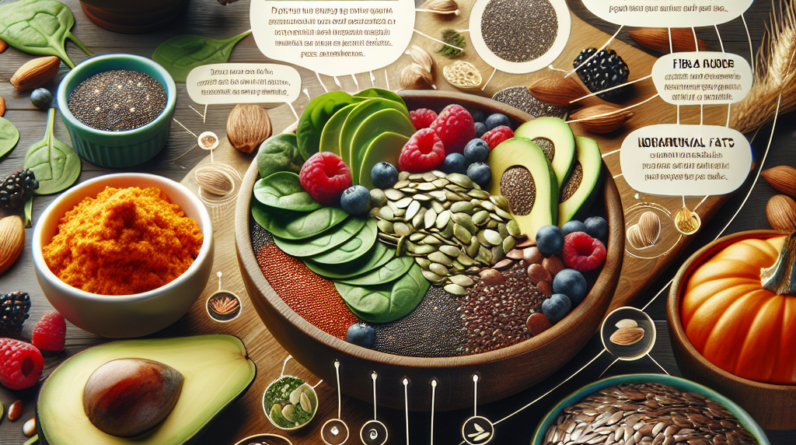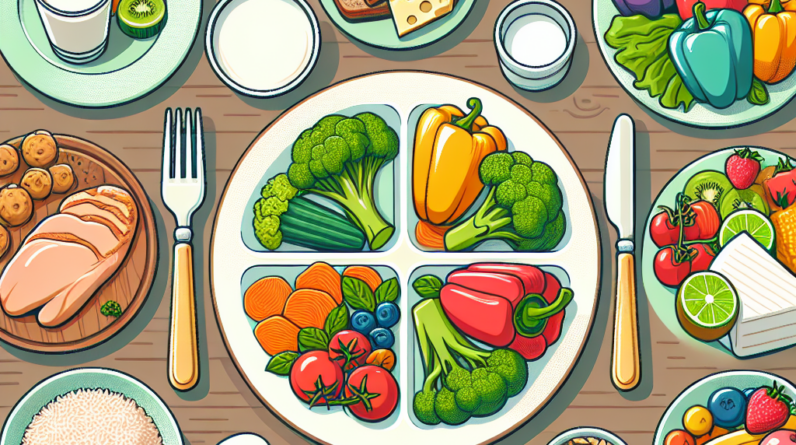
Choose Organic Foods Whenever Possible
Understanding Organic Certification
One of the best ways I’ve found to steer clear of GMOs is by opting for organic foods. When you see that organic sticker on your produce or packaged goods, it means they’re grown without synthetic pesticides and fertilizers, and crucially, they are GMO-free. It’s comforting to know that there’s a standard that ensures you’re making a cleaner choice.
Get a Huge Discount and Bonus! Try for 90 Days Risk Free
But here’s the catch: not all products labeled “natural” or even “non-GMO” are necessarily organic. So, it’s good to read the labels carefully! I’ve learned to make this a habit, and thanks to it, I feel better informed about what I’m putting in my body.
Plus, many local farms follow organic practices but may not have the certification due to costs or red tape. Don’t hesitate to talk to your farmers at local markets about their practices. Building that connection can lead to even better choices!
Shopping at Farmer’s Markets
Farmer’s markets are pure gold for anyone trying to avoid GMOs. I love strolling through the stalls, engaging with the farmers, and asking them about their growing methods. It’s a great way to discover seasonal produce while avoiding the industrial agricultural practices that often involve GMOs.
When I’m at the market, I pay attention to how they cultivate their crops. Many small farms pride themselves on using traditional farming techniques that shun GMOs, and that’s the kind of support I want to provide with my purchases. Plus, the produce tastes way fresher!
Recently, I started bringing my kids along to these markets. They love picking out fruits and veggies and asking questions, which teaches them about choosing healthy, non-GMO foods. It’s a win-win!
Reading Labels Like a Pro
One skill that has really helped me on this GMO-free journey is learning to read labels effectively. It can be easy to get tricked by marketing buzzwords, so I always look for certified labels like USDA Organic or Non-GMO Project Verified when I’m shopping.
For packaged foods, I also check the ingredient list. If I see ingredients I can’t pronounce, or if it says “corn starch” or “soy lecithin,” I usually avoid it. Those are often derived from GMO crops. It takes a little time and awareness, but I promise it’s worth it!
Creating a list of trusted brands that are known for being non-GMO also helps. With time, you’ll get familiar with what to look out for, and grocery shopping can transform into a more empowering experience.
Get a Huge Discount and Bonus! Try for 90 Days Risk Free
Grow Your Own Food
Starting a Small Garden
There’s something incredibly satisfying about growing your own food. I started with just a few pots on my balcony, growing herbs and tomatoes, and let me tell you, it changed everything. Knowing exactly how your food was grown gives you peace of mind in avoiding GMOs.
Even if you don’t have a backyard, container gardening is totally an option. Herbs like basil, thyme, and oregano are super easy to maintain and can make your dishes tastier, not to mention you know there’s no GMO nonsense in there.
Plus, it’s a fantastic activity to involve the kiddos. They love digging in the dirt and watching their plants grow. It’s a neat way to teach them about healthy eating right from the source.
Utilizing Local Seed Exchanges
Once I got the hang of gardening, I also discovered local seed exchanges. These are communities where people share heirloom and organic seeds, which are typically non-GMO. Swapping with locals not only diversifies my garden but supports sustainable practices.
Need a Serious Energy BOOST? Huge Discount Try for 90 Days Risk Free
I’m all about preserving those unique varieties that have been around for generations. By using local seeds, I feel like I’m doing my part to keep traditional farming alive and prevent the spread of mass-produced GMO varieties.
Participating in these exchanges has also led to friendships with fellow gardeners who share my passion, and we often exchange tips and recipes too. It’s a beautiful circle of community and health!
Respecting Seasons
One lesson I’ve learned while growing my own food is to respect the seasons. Eating seasonally not only connects me with the rhythm of nature but also helps avoid the situation where I’d need to buy out-of-season produce that might be GMO.
This means taking advantage of summer’s bounty of berries and tomatoes or fall’s delicious squash. Eating seasonally encourages variety in my diet and keeps things exciting. And honestly, the flavor of in-season food is always off the charts!
It’s also a great way to save money. Seasonal produce tends to be cheaper, fresher, and more nutritious. There’s nothing quite like whipping up a dish with fresh ingredients straight from my garden or local farm.
Educate Yourself About GMOs
Understanding GMOs
Taking the time to educate myself about GMOs was a game-changer. I learned that GMOs, or genetically modified organisms, are organisms whose DNA has been altered in a way that doesn’t occur naturally. That made me a bit skeptical about everything I was putting into my body.
There are lots of resources online – documentaries, articles, and research papers – that dive into the biotech behind GMOs. As I explored, I became more aware of the potential impacts on health and the environment. Knowledge is power, right?
Being informed not only empowers me but also allows me to have informed conversations with friends, family, and even at dinner parties. I find that once you start talking about GMOs, others have questions, and it sparks some meaningful discussions.
Joining Online Communities
Another avenue I found helpful was joining online groups and forums focused on non-GMO living. These communities share awesome tips, products to look out for, and even recipes tailored to a GMO-free life.
Good Health Solution is Easier Than Most People Think!
Take a Look for Yourself!
It’s refreshing to see so many people on the same journey. It makes me realize that I’m part of a larger movement aimed at promoting a healthier, more sustainable food system.
The best part is being in a community that encourages dialogue. Whether it’s sharing stories of success or challenges, people are always willing to lend a supporting word or great advice!
Following Reliable Sources
I also make a point to follow credible organizations and influencers who focus on non-GMO practices. Their insights and updates help me stay informed about the latest developments and available resources.
Plus, they often share recipes and cooking methods that help maintain a non-GMO diet while still being delicious. I’ve discovered new ways to enjoy my meals without worrying about GMOs lurking in the ingredients.
This continuous learning keeps my interest piqued and fuels my passion for healthier eating, which I believe is essential for long-term health and well-being.
Advocating for Non-GMO Practices
Engaging with Local Governments
As I became more knowledgeable, I felt compelled to advocate for non-GMO practices. Engaging with local governments about the importance of GMO labeling and funding for organic farming initiatives is a powerful way to make a difference.
I’ve joined community meetings and voiced my opinions about organic farming incentives and better labeling laws. It feels good to know I’m part of a collective effort to create change in my community.
Plus, when more of us speak up, it raises awareness about the demand for GMO-free products among local businesses. Over time, I’ve noticed that many stores have increased their organic and non-GMO offerings, which is encouraging!
Supporting Non-GMO Brands
Another way I make an impact is by supporting companies that prioritize non-GMO ingredients and sustainable practices. Every time I purchase products from these brands, I’m casting a vote for the kind of food system I wish to see.
Whether it’s choosing snacks, frozen meals, or even beverages, I make sure they have the Non-GMO Project Verified seal. Trust me, it’s a small action that counts towards a larger movement!
Sometimes I even reach out to these brands on social media to express my appreciation for their non-GMO commitments. Companies listen when consumers show they care – it’s empowering to be part of the change!
Sharing Your Journey
Lastly, sharing my own journey to avoiding GMOs has created ripple effects within my social circles. I’ve started conversations with friends and family about why I’ve made these choices, and many of them are intrigued to try it themselves.
Whether it’s organizing a non-GMO potluck or simply sharing articles and resources, I open the door for others to learn and explore this lifestyle. Knowledge shared is knowledge gained!
It’s incredible how just opening up about my food choices encourages others to reflect on their own. Together, we can build a healthier community focused on non-GMO practices.
Conclusion
Avoiding GMOs in my diet has been a transformative experience, one that requires a little diligence but is completely doable. By choosing organic options, growing my own food, educating myself, and advocating for non-GMO practices, I’ve not only improved my health but also contributed to a larger movement advocating for transparency and better food systems.
I hope this guide helps you on your own journey towards avoiding GMOs. Remember, every small choice counts, and trust me, you’ll feel empowered making these decisions!
FAQs
1. What are GMOs?
GMOs, or genetically modified organisms, are plants or animals that have had their DNA altered in a lab through genetic engineering. This process is used to create certain desired traits, like pest resistance or faster growth.
2. How can I tell if a product is GMO-free?
Look for certifications such as ‘USDA Organic’ or the ‘Non-GMO Project Verified’ seal on labels. Be sure to also read ingredient lists carefully to catch any potential GMO ingredients.
3. Is organic food always GMO-free?
Yes! Organic certification prohibits the use of GMOs, meaning any food labeled organic will not contain genetically modified ingredients.
4. Can I trust all “natural” products to be non-GMO?
Not necessarily. “Natural” doesn’t equal non-GMO. Always check for credible certifications to be sure.
5. How can I advocate for non-GMO practices?
You can advocate by engaging with your local government, supporting non-GMO brands, sharing your journey with others, and participating in community activities that promote non-GMO living.








